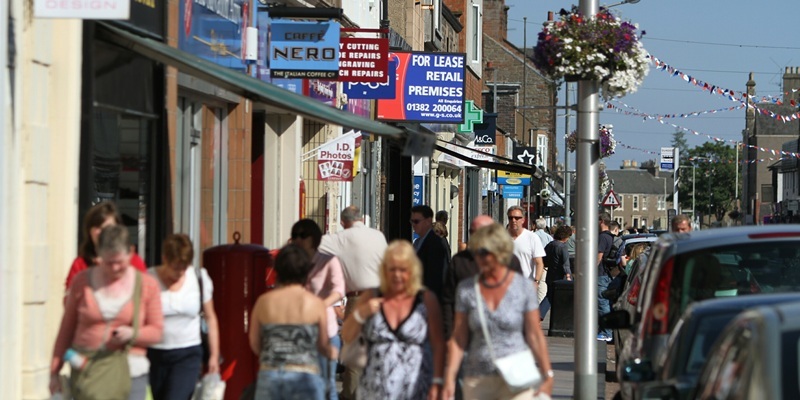Broughty Ferry’s viability as a place to go shopping is threatened by Sainsbury’s bid to sell more non-food products at its store on the outskirts of the suburb, it has been claimed.
The influential local traders’ association also believes there is no convincing argument to support the supermarket giant’s bid, apart from making more money for the company.
The body, which represents almost 100 businesses in Broughty Ferry, was commenting on Sainsbury’s application to increase the amount of non-food products it sells at its Claypotts store.
When the store opened at the end of 2001, it was allowed to devote only 10% of its sales area to non-food material. It now wants to increase that to 20% or 30%.
Sainsbury’s believes the existing condition is too restrictive and points out that other Dundee supermarkets have a 30% to 70% split between non-food and food products.
City council officials are recommending a 20% to 80% split be granted for Sainsbury’s because Broughty Ferry is a special case which needs careful consideration.
In a time of low consumer and retail confidence, council officials recognise Broughty Ferry could be vulnerable to changes which might undo recent improvement in viability, and any changes should be small and incremental.
Broughty Ferry Traders’ Association is not placated by the effort to protect its interests. It has been against the supermarket from the outset and is unhappy the goalposts have been moved to accommodate it.
”The Claypotts site was originally zoned for non-retail use but the old Scottish Enterprise Tayside appealed to the council to change the designation because it couldn’t find anyone to move in,” a spokesman said.
”The goalposts were moved to allow Sainsbury’s in but the 10% non-food condition was imposed to protect Broughty Ferry shops. Now we are facing the goalposts being moved again. Sainsbury’s is now not happy with the 10% rule and wants it raised, and this can only be to help the company make more money but at what cost?.
”The council say that less than half of the shops in Broughty Ferry sell goods that compete with Sainsbury’s, but less than half could still be quite a lot of shops.”
The traders’ association is opposed to any increase in the amount of non-food products Sainsbury’s is allowed to sell and is ”deeply concerned” at the council’s apparent tolerance of a 20% to 80% split.
”The impact of increasing the non-food retail space to 20% of the store on the traditional local retailing sector will be significant, not just in Broughty Ferry but also in Monifieth, which is under pressure,” the spokesman added.
”It is widely accepted that a vibrant and viable spread of business services is needed to support small town communities like Broughty Ferry, and the council allowing Sainsbury’s to increase its non-food space will threaten to undermine this spread in Broughty Ferry.”
There are plenty of examples of supermarkets sucking the life out of town centres through their one-stop approach, with which local shops struggle to compete, the traders’ association says.
The traders’ group has discussed the issue at its meetings and is firm in its view, the spokesman said.
The association urged councillors not to overlook the interests of Broughty Ferry when they meet on Monday.
Council officials say a limited increase from 10% to 20% at this stage would allow Sainsbury’s to provide an improved range of comparison goods, but there should be further study of the cumulative effect of the proposed increase.
